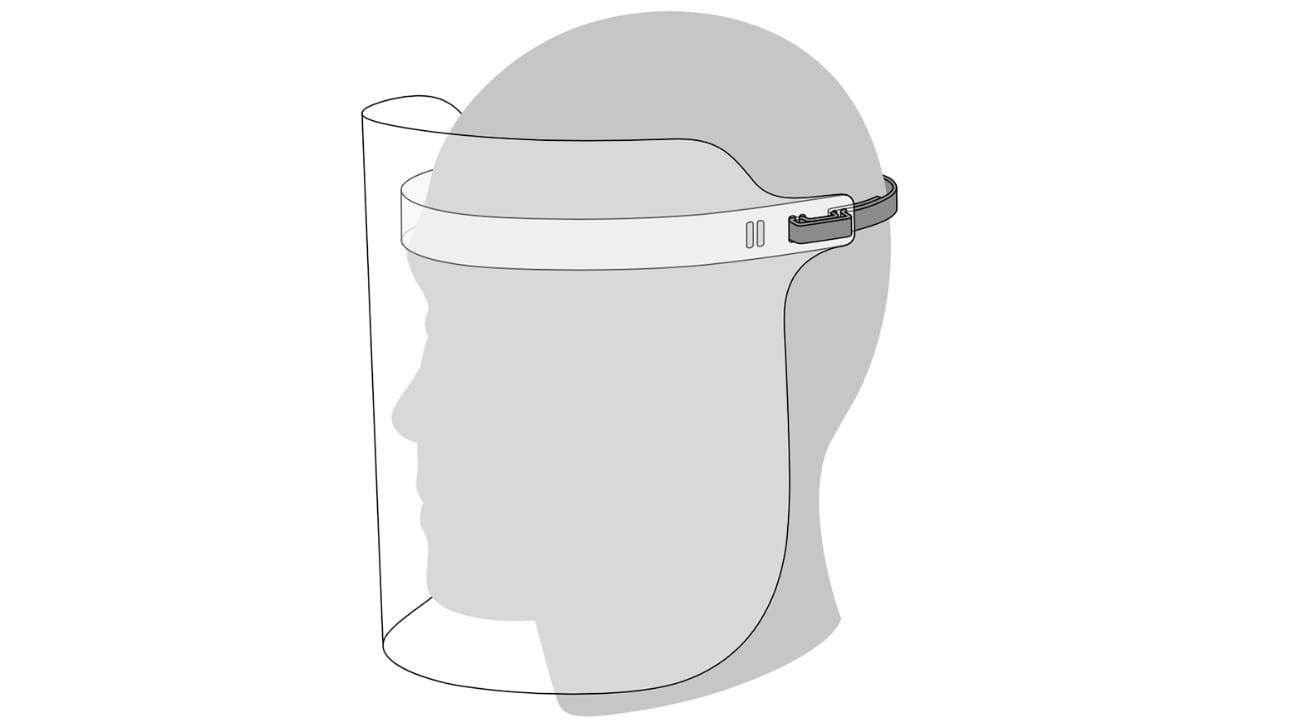Aside from its own face shield production efforts, Apple is encouraging others to make their own versions of the personal protection headwear, by publishing instructions and related design files on its support pages for fabricating the items.
In a support page update published on Sunday, the page titled "Make your own face shield" advises on how to create the protective clothing, which has become vital for healthcare professionals on the front line of the coronavirus pandemic. The page goes into detail on how to create a face shield similar to the one Apple itself has designed and started to distribute.
The instructions recommend the use of 0.5mm-thick clear PET or PETG for the shield and forehead band elements. A latex-free silicone strap measuring 1.4 to 1.6mm in thickness and with a Shore 50A specification is recommended, with further advice to not use natural rubber latex for allergy reasons, while non-silicone materials "may degrade quickly."
For the manufacturing, Apple suggests a range of methods could be used, including laser cutting, die-cutting, water jetting, and drag knife techniques. Design files are also provided to assist with fabrication, as well as a long list of other processes that people making the face shields should follow.
Apple also offers additional help in the form of a dedicated email address for face shield production.
Despite publishing the instructions, Apple warns at the top of the document "these manufacturing instructions should only be used by an expert," that the items require "professional-level expertise in manufacturing and design," and should only be made by professional engineers or machinists "in a factory environment."
The instructions arrive two weeks after Apple revealed it was producing face shields for medical workers. Donations of the face shields have been issued, including one announcement by the Port of Los Angeles on April 17, claiming it had received 160,000 of the shields.
 Malcolm Owen
Malcolm Owen








 Charles Martin
Charles Martin


 William Gallagher
William Gallagher

 Christine McKee
Christine McKee
 Wesley Hilliard
Wesley Hilliard









2 Comments
"There's some ideas we want every company to copy"
-Apple on helping the environment
Yet another reason most of us here like Apple, the company, as well as their products.